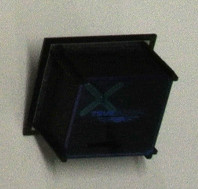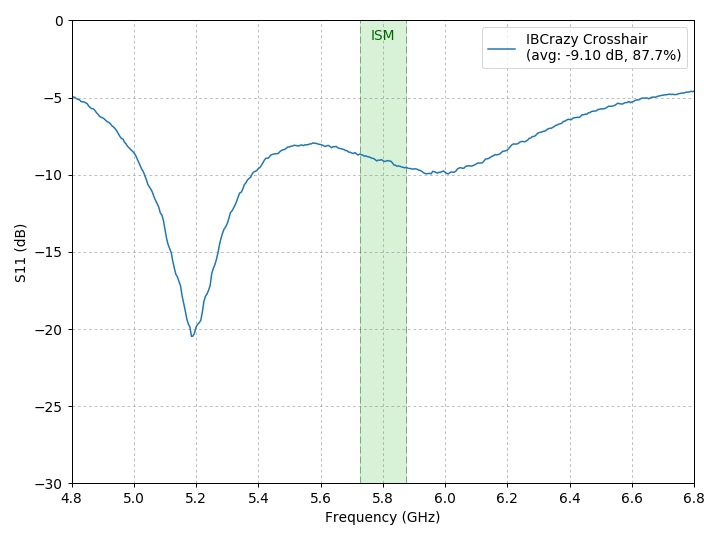IBCrazy Crosshair
This is essentially two dipoles at a 90-degree angle. They have a very tiny length difference so they resonate at a slightly different frequency (e.g. one at 5.7 GHz and one at 5.9 GHz when the center frequency is 5.8 GHz). At the correct frequency, the imaginary parts of the complex antenna impedance (caused by the frequency offset) of the two dipoles cancel out, and only the real part remains. At this point, the power is split equally between both dipoles. When properly designed, the dipoles create a +45/-45 degree phase difference (as a result of the imaginary component of the impedance, which is positive for one dipole and negative for the other). When combined, this produces circularly polarized radiation.
The biggest challenge of this type of design is that it needs to be carefully tuned to get the correct behaviour. Also, if the frequency deviates too much from the ideal point, the power is split unequally between the two antennas and the axial ratio degrades rapidly. Long story short, this design can perform really well when made properly, but it is very sensitive to manufacturing variations.
VNA measurements
|
|
Matching is pretty bad. The return loss is higher than -10 dB across the entire ISM band, so calling this a 5.8 GHz antenna is a bit of a stretch. It seems to have very decent matching at 5.2 GHz though. The tuning could be improved a lot. |
Comments
There are no comments yet.

